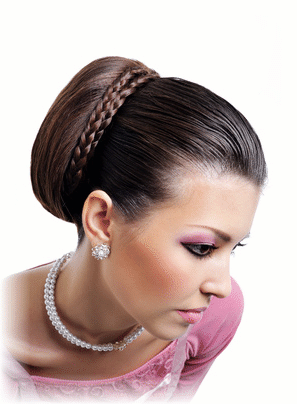MANUEL & THERESA'S SCHOOL OF HAIR DESIGN |
 | MANUEL & THERESA'S SCHOOL
Accredited since: 2007 |
|
The earliest recorded uses of cosmetics and hair design are linked to Royalty, and members of high society and many times religious ceremony. Eventually through time it became a part of all of our lives in one way or another. Everyone can use a hairdresser; men, women, girls and boys. And though spa treatments are popping up all over the world like never before - Spas are nothing new. Egyptians, Romans and Greeks are well known for their use of essential oils and bathing systems. QUOTE - The earliest use of cosmetics has been traced to the ancient Egyptian, who invented a number of cosmetic, herbal, and fragrance preparations for use in their personal grooming regimens as well as in religious ceremonies and burial rites. The Egyptians were the first to develop methods for extracting herbal and flower essences through distillation, which is still the preferred method of extracting essential oils today. The Egyptians believed in cleanliness and built elaborate systems for bathing that were later adopted by the Greeks and Romans - END QUOTE. Quote taken from Miladyís Standard Fundamentals for Estheticians ninth edition, page 5. This book also gives a brief history on the cosmetic and hair grooming practices of the Hebrews, Greeks, Romans, Asians, Africans, The Middle Ages, The Renaissance, The Victorian Age and the 20th century. The Egyptians cared about their appearance a great deal. Women spent a lot of time bathing, rubbing oils and perfumes into their skin, and using their many cosmetic implements to apply make-up and style their wigs. Women would apply khol, a black dye kept in a jar or pot, to line her eyes and eyebrows, using a brush or pencil made of a reed. Men wore this eye make-up as well, which was not only a fashion but also protected against the eye infections which were common in Egypt. They would use a dye called henna to redden their nails and lips. Wigs were worn by men and women. A woman would place a cone made of fat soaked in sweet smelling ointment on her head, which slowly melted over her wig during a warm evening. Appearance indicated a personís status, role in a society or political significance. |
Would you like a head start studying for beauty school? Check out free samples of cosmetology, barbering, nail technician & esthetics exams below: Cosmetology Exam Samples: Anatomy & Physiology Chemistry Hair Cutting & Styling Hair Coloring & Texturing Nails Skin Trichology Barber Exam Samples: Anatomy & Physiology Bacteriology Chemistry Hair Cutting, Styling & Design Infection Control & Safety Practices Shaving Skin Histology Nail Tech Exam Samples: Acrylics, Gels & Wraps Bacteria & Infectious Agents Electric Filing Manicuring & Pedicuring The Nail & Nail Disorders Nail_Product_Chemistry Sanitation & Disinfection Esthetician Exam Samples: Systems Of The Body & Organs Basic Facials & Masks Electricity Hair Anatomy & Hair Removal Machines Makeup and Color Skin Conditions, Disorders & Diseases www.onlinecosmetologyexam.com Cosmetology, Barbering, Nail Technology & Esthetician Textbooks are also available prior to beauty school online below: Cosmetology School Textbooks Barber School Textbooks Nail Technician Textbooks Esthetician School Textbooks |
Return to Main Page |